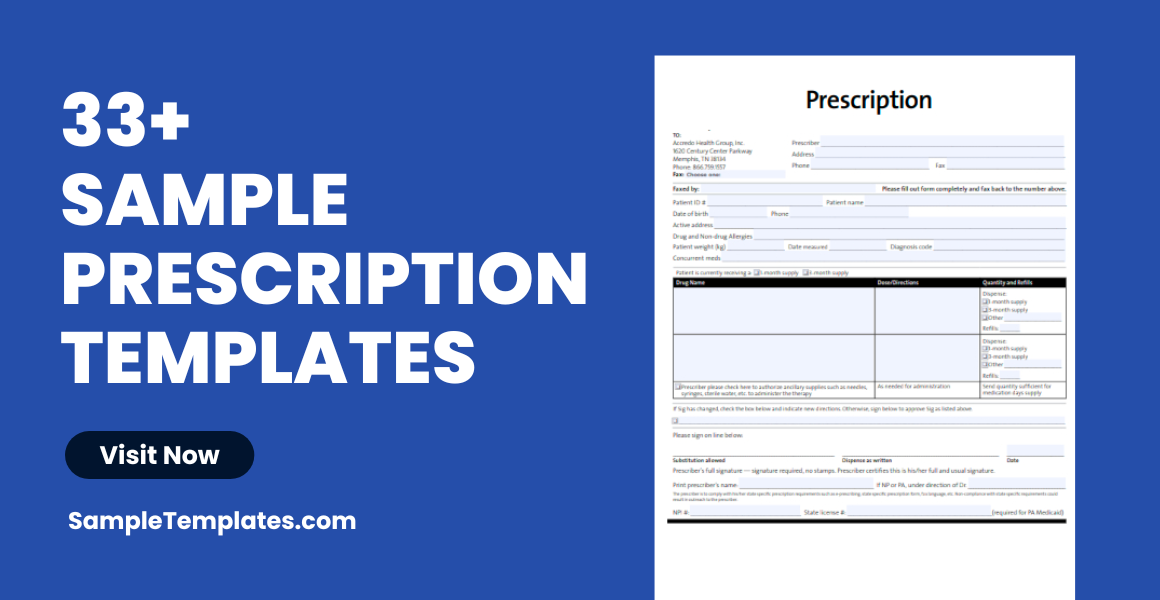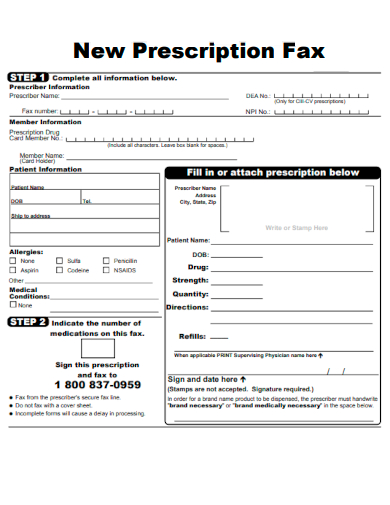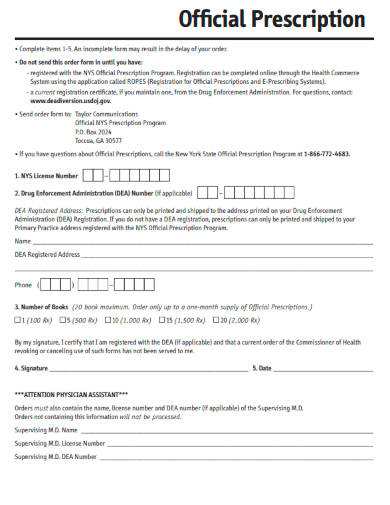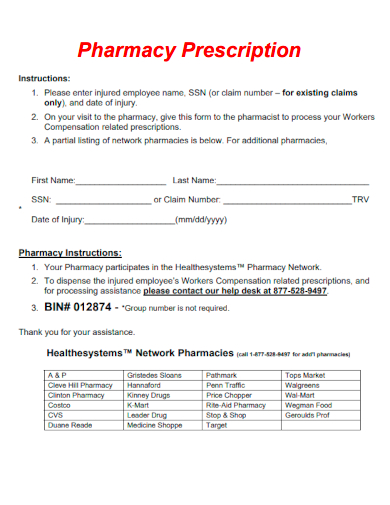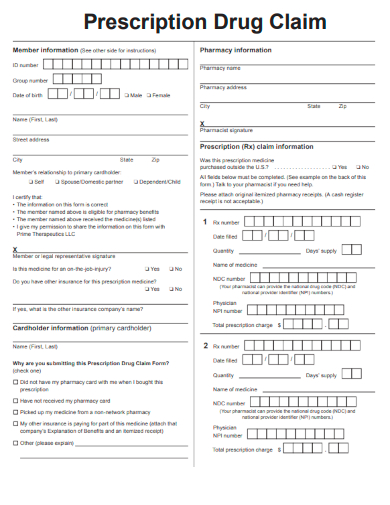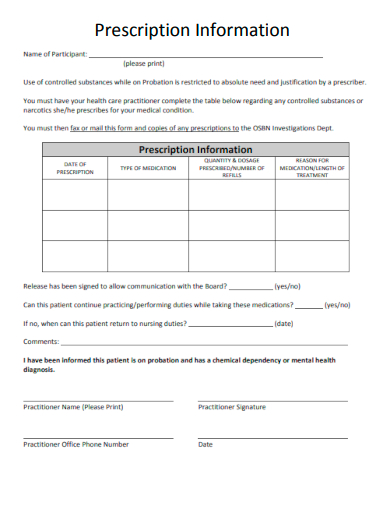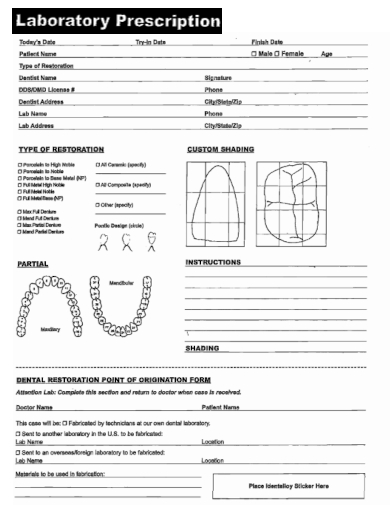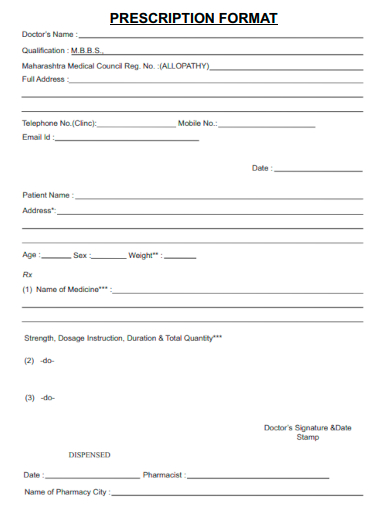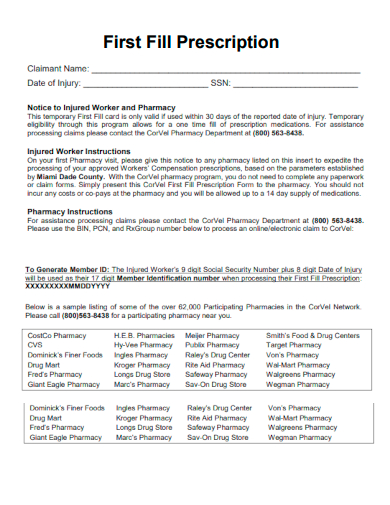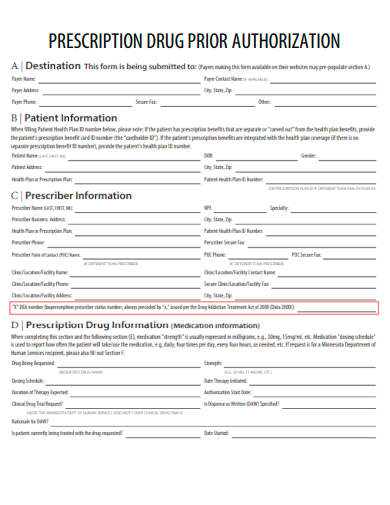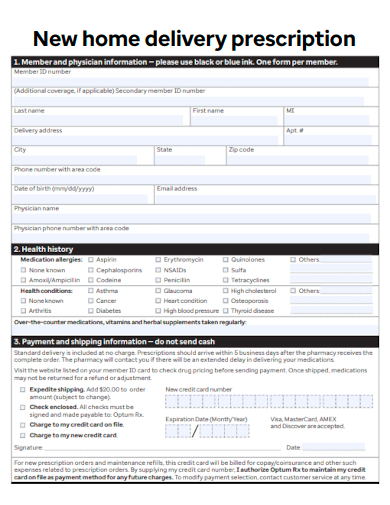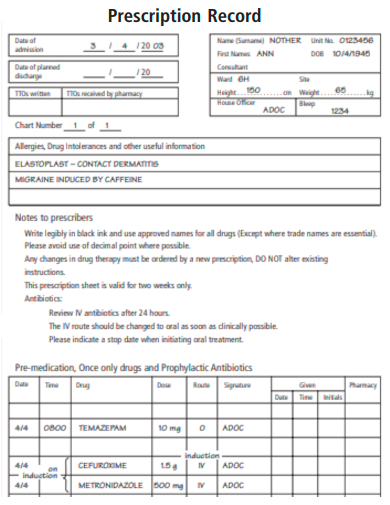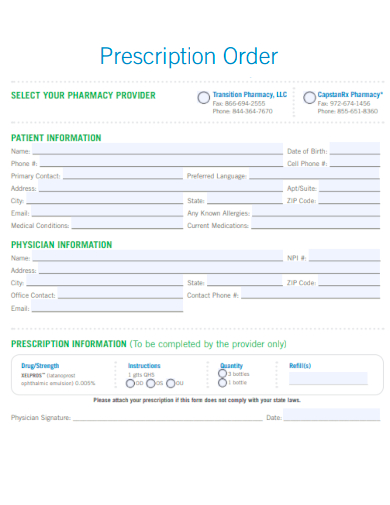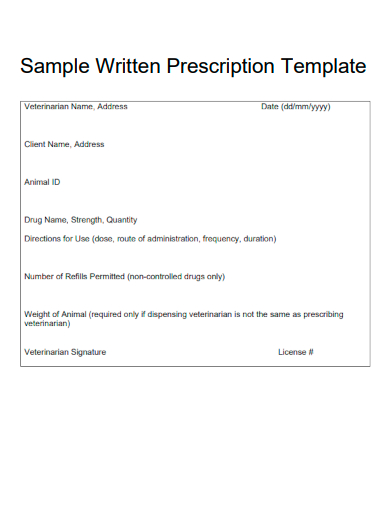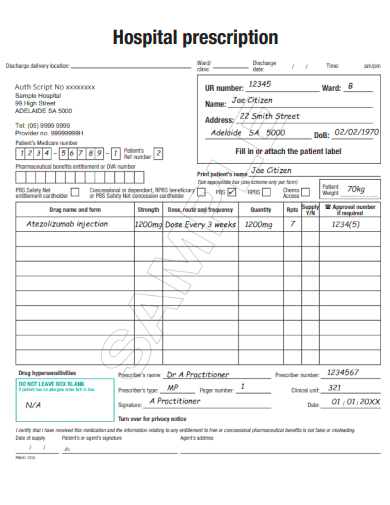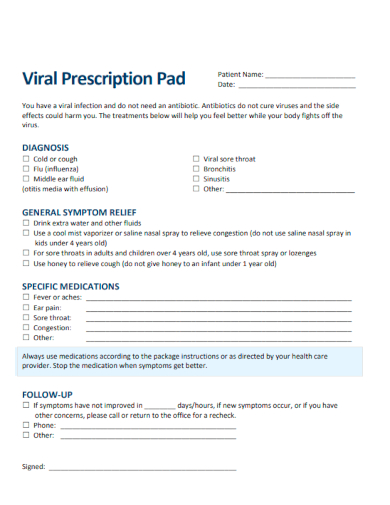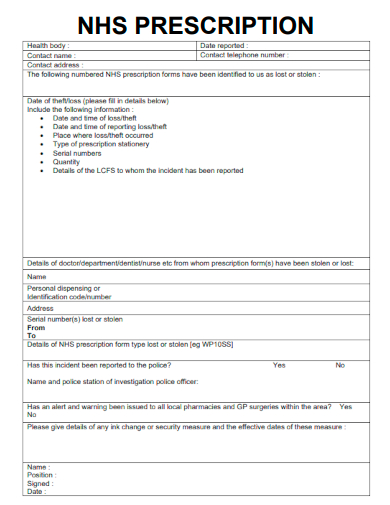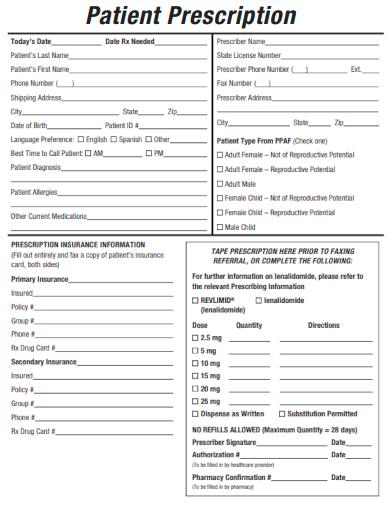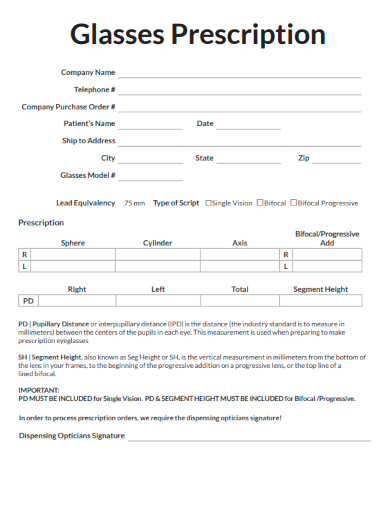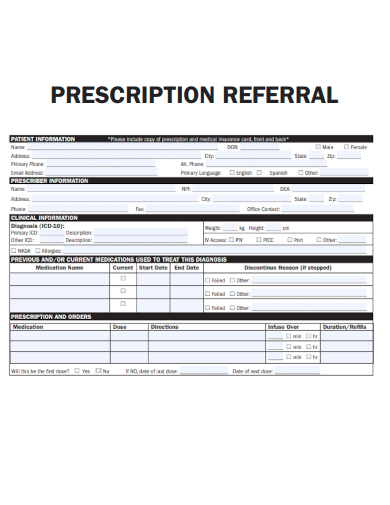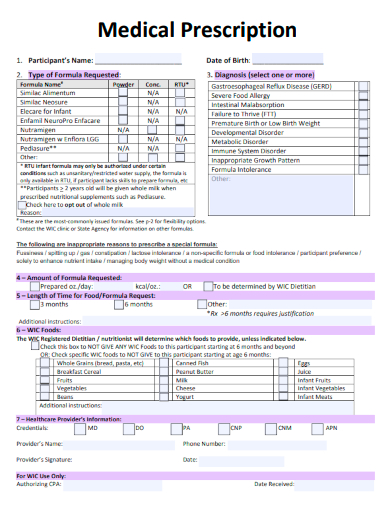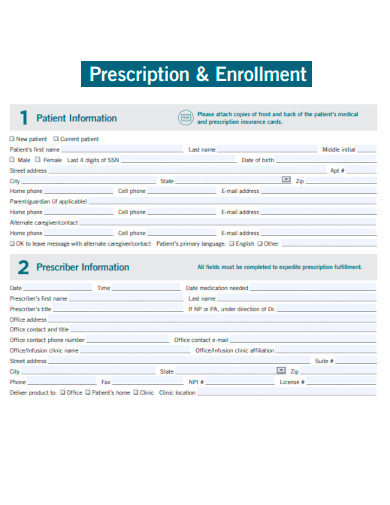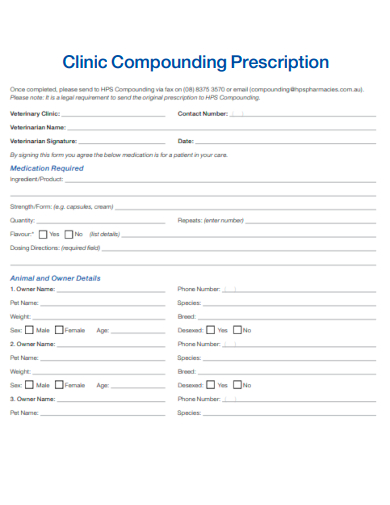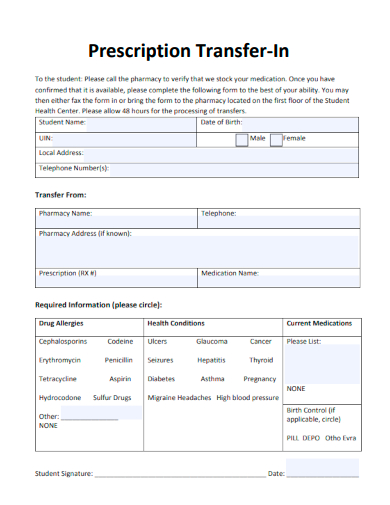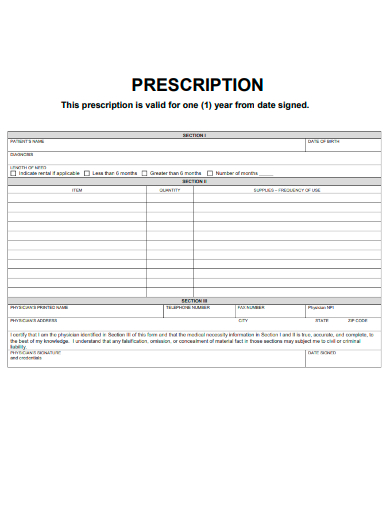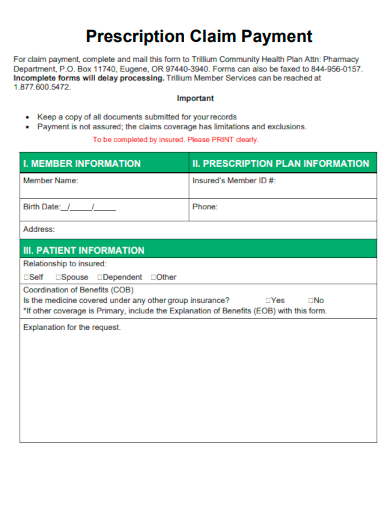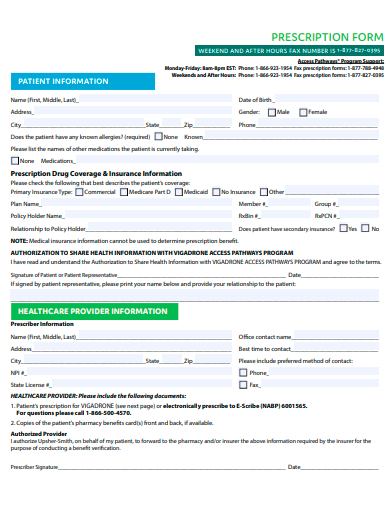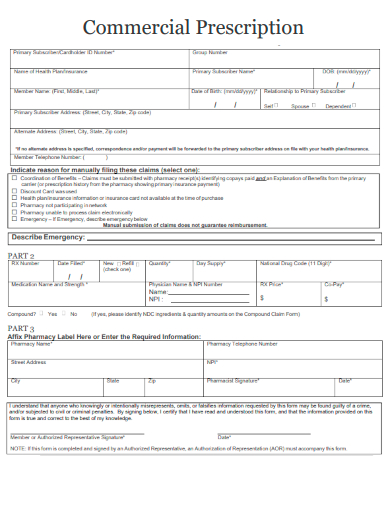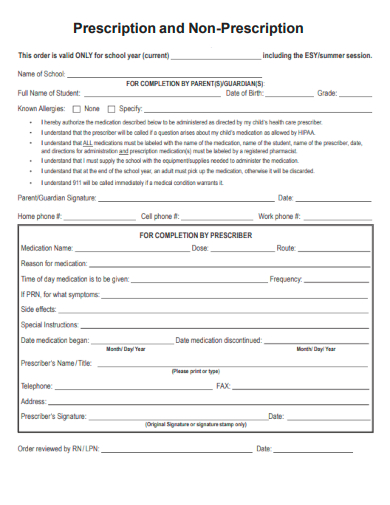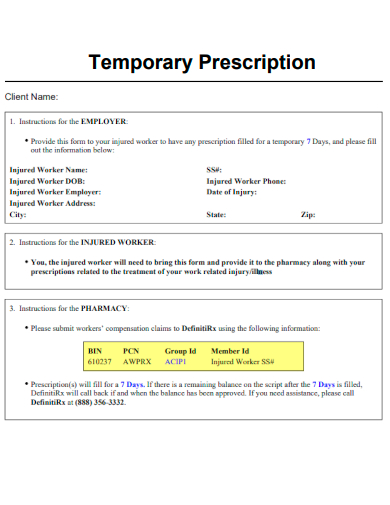Welcome to our Sample Prescription Template, a comprehensive guide designed to empower you with the knowledge and tools to manage your health effectively through medical prescriptions. This resource offers a carefully curated prescription blueprint, filled with insights for optimizing your well-being. Whether you’re seeking guidance on medication regimens, lifestyle adjustments, or wellness strategies, this prescription template equips you with the essential information. Dive into this comprehensive guide and take control of your health, one informed decision at a time.”
FREE 33+ Prescription Samples
1. Sample Blank Prescription Template
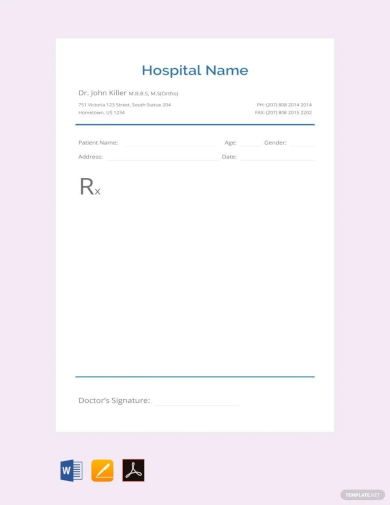
2. Sample Prescription Bottle Label Template

3. Sample New Prescription Fax Template
4. Sample Official Prescription Template
5. Sample Pharmacy Prescription Template
6. Sample Prescription Drug Claim Template
7. Sample Prescription Information Template
8. Sample Laboratory Prescription Template
9. Sample Prescription Basic Template
What is a prescription?
A prescription is a crucial medical document issued by a qualified healthcare provider, typically a physician, nurse practitioner, or dentist, to authorize the dispensing of specific medications, treatments, or therapies to a patient. This document serves as a legally binding and professional recommendation sample for the patient’s course of treatment, outlining essential details such as the medication’s name, dosage, administration instructions, and the duration of treatment.
Prescriptions are an integral part of modern healthcare, playing a pivotal role in patient care and medication management. Here, we delve into the various aspects of a prescription, its components, significance, and the process involved.
Components of a Prescription:
Patient Information: A prescription typically begins with the patient’s details, including their full name, date of birth, address, and sometimes additional identifying information. This ensures that the medication is intended for the correct individual.
Prescriber Information: The prescriber’s information is essential and includes their name, credentials, contact information, and often their registration or license number. This establishes the legitimacy of the prescription.
Medication Details: The core of the prescription is the medication itself. This section includes the name of the drug, its strength (e.g., milligrams), and the medical form (e.g., tablet, capsule, liquid). The prescriber specifies the quantity and dosage, providing clear instructions on how the medication should be taken.
Dispensing Instructions: This part outlines how the medication should be dispensed, which pharmacy or healthcare facility should provide it, and whether substitutions are permitted.
Duration: The prescription specifies the period for which the medication is prescribed. Some medications are short-term, while others may be for ongoing use. The prescriber determines the duration based on the patient’s condition and treatment plan.
Additional Information: In some cases, the prescription may include additional information, such as refills, special instructions, or warnings about potential side effects.
The Significance of a Prescription:
Legal Authorization: A prescription serves as a legally binding document that authorizes pharmacists and healthcare professionals to dispense specific medications. It ensures that controlled substances are distributed only to those who genuinely need them.
Safety and Accuracy: Prescriptions are a critical tool in preventing medication errors. They provide precise details about the medication, dosage, and administration, reducing the risk of incorrect usage.
Individualized Treatment: Prescriptions are tailored to each patient’s unique medical condition and needs. They enable healthcare providers to prescribe the most suitable treatment, taking into account factors like allergies and previous medical history.
Monitoring and Follow-up: A prescription often includes a treatment duration. This allows healthcare providers to monitor the patient’s progress and make necessary adjustments to the treatment plan.
Insurance Coverage: Insurance companies often require prescriptions to validate and cover the cost of medications. Without a prescription, patients may need to pay for medications out of pocket.
The Prescription Process:
Diagnosis: The process begins with a patient’s visit to a healthcare provider. The provider evaluates the patient’s symptoms, medical history, and may perform tests to make a diagnosis.
Treatment Plan: Based on the diagnosis, the healthcare provider creates a treatment plan, which may include medications.
Prescription Issuance: If medication is deemed necessary, the healthcare provider writes a prescription, detailing the specific drug, dosage, and other relevant information.
Dispensing: The patient takes the prescription to a pharmacy or healthcare facility, where a pharmacist or healthcare professional reviews the prescription and dispenses the medication.
In conclusion, a prescription is a critical element of modern healthcare, serving as a bridge between healthcare providers and patients, ensuring safe and effective treatment. It plays a pivotal role in personalized medicine, medication safety, and the overall well-being of patients.
10. Sample Activity Prescription Template
11. Sample Prescription Format Template
12. Sample First Fill Prescription Template
13. Sample Prescription Drug Prior Authorization Template
14. Sample Home Delivery Prescription Template
15. Sample Prescription Record Template
16. Sample Prescription Order Template
17. Sample Written Prescription Template
18. Sample Hospital Prescription Template
19. Sample Viral Prescription Pad Template
20. Sample NHS Prescription Template
21. Sample Patient Prescription Template
22. Sample Glasses Prescription Template
How do you write a prescription?
Writing a prescription is a vital skill for healthcare professionals like doctors, nurse practitioners, and dentists. A prescription is a legal and medical document that grants patients access to specific medications, treatments, or therapies. Here’s a comprehensive guide on how to write a prescription:
Assessment and Diagnosis:
Begin by conducting a thorough assessment of the patient’s condition. This includes taking a detailed medical history, performing physical examinations, and ordering relevant diagnostic tests. Accurately diagnose the patient’s medical condition based on the gathered information, guiding your prescription decisions.
Choosing the Medication:
Select the most suitable medication for the patient’s condition, considering factors such as the patient’s diagnosis, allergies, age, weight, and potential drug interactions. Determine the medication’s name, strength, and form (e.g., tablet, capsule, liquid).
Dosage and Administration:
Prescribe the correct dosage, specifying the amount of medication the patient should take at each dose. Provide clear administration instructions, including how often the medication should be taken (e.g., once daily, every six hours), the route of administration (e.g., orally, intravenously), and whether it should be taken with food or water.
Duration of Treatment:
Specify the duration for which the medication should be taken. Some medications are for short-term use (e.g., antibiotics for a week), while others are part of a long-term treatment plan (e.g., chronic medication).
Additional Information:
Include any specific instructions or warnings relevant to the medication. This might involve mentioning potential side effects, drug interactions, or precautions the patient should take.
Patient and Prescriber Details:
Write the patient’s full name and date of birth clearly on the prescription to ensure that the medication is intended for the correct individual. Include your name, contact information, and professional credentials to establish the legitimacy of the prescription.
Record Keeping:
Maintain a copy of the prescription in the patient’s medical record for documentation and legal purposes. This ensures a complete medical history and facilitates follow-up care.
Patient Counseling:
Before the patient leaves, take a moment to explain the prescription. This includes discussing the purpose of the medication, proper administration, potential side effects, and the importance of compliance.
Writing a prescription requires careful consideration of the patient’s needs, medical knowledge, and adherence to legal and ethical guidelines. Accuracy and clarity are paramount to ensure that patients receive the appropriate treatment.
23. Sample Prescription Referral Template
24. Sample Medical Prescription Template
25. Sample Prescription & Enrollment Template
26. Sample Clinic Compounding Prescription Template
27. Sample Prescription Transfer-In Template
28. Sample Prescription Formal Template
29. Sample Prescription Claim Payment Template
30. Sample Prescription Form Templates
31. Sample Commercial Prescription Template
32. Sample Prescription and Non-Prescription Template
33. Sample Temporary Prescription Template
34. Sample Prescription & Service Request Template
What is the most common type of prescription?
The most common type of prescription is for oral medications in the form of tablets or capsules. These prescriptions are typically used for a wide range of medical conditions and are part of everyday healthcare. Here, we’ll delve into the details of oral medication prescriptions, their prevalence, and why they are so commonly prescribed in the healthcare field.
Oral Medications: The Most Common Prescription Type
Oral medications, which include tablets and capsules, are by far the most frequently prescribed type of medication in healthcare. These prescriptions are widely used to treat various medical conditions, from common ailments like infections and pain to chronic diseases such as hypertension and diabetes.
Why Oral Medications Are Common:
Ease of Administration: Oral medications are relatively easy for patients to take. They don’t require special medical equipment or professional assistance, making them accessible for self-administration at home.
Diverse Applications: Oral medications cover a broad spectrum of medical needs. They can be prescribed for acute conditions, chronic diseases, pain management, and preventive care, among others.
Patient Preference: Many patients prefer oral medications over other forms of treatment, such as injections or intravenous therapy, due to their convenience and familiarity.
Pharmaceutical Advancements: Continuous advancements in pharmaceuticals have resulted in a wide range of oral medications with improved efficacy and reduced side effects, making them suitable for various medical conditions.
Cost-Effective: Oral medications are often cost-effective both for patients and healthcare systems, making them a practical choice for treatment.
Non-Invasive: Unlike injections or surgical interventions, oral medications are non-invasive, reducing the physical discomfort associated with some medical treatments.
Common Types of Oral Medications:
Pain Relievers: Medications like acetaminophen, ibuprofen, and opioids are commonly prescribed for pain management.
Antibiotics: Used to treat bacterial infections, antibiotics like amoxicillin and azithromycin are among the most frequently prescribed medications.
Chronic Disease Management: Medications for chronic conditions like hypertension (e.g., lisinopril), diabetes (e.g., metformin), and high cholesterol (e.g., atorvastatin) are routinely prescribed.
Vitamins and Supplements: Many individuals receive prescriptions for vitamin and mineral supplements to address deficiencies.
Allergy Medications: Antihistamines and other allergy medications are prevalent, especially during allergy seasons.
Contraceptives: Oral contraceptives are widely used for birth control.
Gastrointestinal Medications: Medications for heartburn, acid reflux, and stomach ulcers are frequently prescribed.
Psychotropic Medications: Antidepressants, anti-anxiety drugs, and medications for mental health conditions are commonly prescribed to manage various psychological disorders.
Prescription Trends:
The prevalence of oral medication prescriptions is likely to continue due to the aging population, increasing chronic diseases, and ongoing pharmaceutical innovations. Telemedicine and digital healthcare platforms have also made it easier for patients to receive and manage their oral medication prescriptions, further contributing to their popularity.
In conclusion, oral medications, in the form of tablets and capsules, are the most common type of prescription in healthcare. Their ease of administration, diverse applications, patient preference, and cost-effectiveness make them a staple in modern medical practice. As healthcare continues to evolve, oral medications will remain a cornerstone of treatment for a wide range of medical conditions.
Related Posts
Retirement Speech Samples & Templates
Weekly Schedule Samples & Templates
Contractual Agreement Samples & Templates
FREE 9+ Amazing Sample Church Bulletin Templates in PSD | PDF
Sample Business Card Templates
Sample Cashier Job Descriptions
Questionnaire Samples
FREE 10+ Sample HR Resource Templates in PDF
FREE 49+ Sample Job Descriptions in PDF | MS Word
FREE 23+ Sample Event Calendar Templates in PDF | MS Word | Google Docs | Apple Pages
Company Profile Samples
FREE 10+ Leadership Report Samples [ Development, Training, Camp ]
FREE 24+ Sample Payment Schedules in PDF | MS Word
FREE 10+ Return to Work Action Plan Samples in PDF | DOC
Autobiography Samples & Templates
